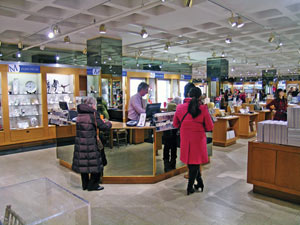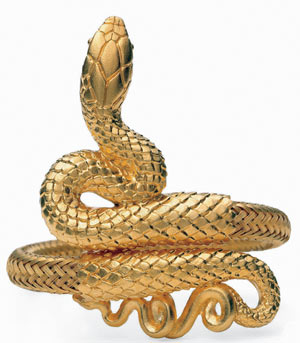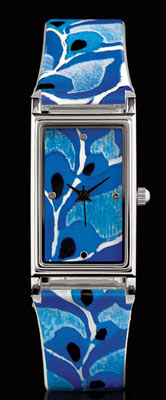Exhibit A: The Museum Store
By the Numbers
$215,026: median net sales for museum stores
$637,357: mean net sales for museum stores
1,000: median size of museum stores, in square feet
86,255: median annual museum attendance
$214: median net sales per square foot
Source: Museum Store Association survey, based on 439 member stores
Meeting the Met’s Mission
Bernadette Starzee
The Metropolitan Museum of Art is an industry icon—and so is its store. Find out how the Met stores work to fulfill the museum’s mission and drive sales.
The Metropolitan Museum of Art Store has an enormous task. Its mission—in addition to generating revenue—is to broaden public awareness of the art collection of one of the largest, most esteemed museums in the world.
With its grand white columns and expansive front steps, the Metropolitan Museum of Art is one of New York City’s most recognizable landmarks. The Met store’s offerings reflect art from the world’s great cultures from ancient times to the present. Through various media, the store provides inexpensive reproductions of items from the museum’s vast collections.
The store’s origins date back to 1871, a year after the museum was granted its charter from New York State. The founding trustees commissioned a Paris engraver named Jules Jacquemart to make etchings of 10 of the museum’s paintings. The set of etchings was offered to museum subscribers for $20, or non-subscribers for $25—subscribers get discounts even today.
There are seven gift shops totaling 22,300 square feet located within the Fifth Avenue museum. These include the spacious, 19,400 square-foot main gift store. There are seven satellite stores located in the New York area. In addition, the museum operates small shops within individual galleries to complement special temporary exhibits. For instance, in October, the store opened three small shops with merchandise related to the new Gossart, Miro and Baldessari exhibits.

Merchandise inception
The main gift shop carries the entire line—about 3,000 items at any given time. The store offers a permanent collection fashioned around perennially popular themes.
The museum staff develops about 90 to 95 percent of the items. Dave Wargo is the general merchandise manager for the Met Store. The museum hosts about 30 to 40 exhibits per year—the store picks up about a dozen of them. Each year, about a half-dozen exhibits carry high potential to be a strong commercial success, Wargo says.
 Museum merchandisers also evaluate product trends in the general marketplace. “For instance, the category of mugs has evolved, with thermal carafes becoming more popular,” Wargo points out.
Museum merchandisers also evaluate product trends in the general marketplace. “For instance, the category of mugs has evolved, with thermal carafes becoming more popular,” Wargo points out.
The store makes sure the products sold, successfully relate to the museum’s exhibits. “We leverage a story-telling agenda across all our businesses,” Wargo says. The catalog and website give detailed descriptions of the inspiration for each piece, and retail shoppers receive a tag with details about the item and the art behind it. In some displays, visuals of the original art are placed alongside products.
Jewelry, at 23 percent of sales, is the largest category for the Met Store. Art is painstakingly reproduced in a broad range of jewelry. For instance, there is the Egyptian snake jewelry collection, modeled after a gold snake bracelet in the museum’s collection of ancient Egyptian art. The original dates back to 300 to 250 B.C. Then there’s a pair of Frank Lloyd Wright Coonley Playhouse Cuff Links ($55), whose colorful, whimsical shapes are adapted from a stained-glass window Wright created.
Another top-selling theme is Le Chat Noir, based on a sequence of cat drawings in Theophile-Alexandre Steinlen’s 1898 book of illustrations, Des Chats. The whimsical cats appear on a set of note cards, a mug, a canvas print and a mouse pad, among other products.
New York City items sell particularly well at the airport shops, Wargo says. The selection includes a wall calendar featuring photos of New York landmarks and a Times Square travel mug among many others. “These items allow people to not only remember their visit to the Met, but to New York City, as well,” Wargo says.
 The wide selection of products is matched by the museum’s broad range of customers. “We have art educators, tourists, school groups and students, and contemporary and classical art lovers,” Wargo says, noting that the largest customer base falls within the ages of 45 and 70.
The wide selection of products is matched by the museum’s broad range of customers. “We have art educators, tourists, school groups and students, and contemporary and classical art lovers,” Wargo says, noting that the largest customer base falls within the ages of 45 and 70.
Other distribution channels
The Met Store also offers products through international licensing agreements and via wholesale. Its first international store opened in Tokyo in 1991 and there are now around 15 locations in several countries.
The store’s domestic wholesale program is open to retailers, including other museum stores, galleries, gift shops and bookstores that are interested in promoting the museum’s brand within their retail environment. Additionally, museum publications are distributed through Yale University Press.
Catalog and online sales are a growing area of focus for the Met Store. “Over the past year and a half, it has been our best-trending channel,” says Wargo, who attributes the trend largely to the fact that the organization has put more resources into that area of the business.
To learn more, visit store.metmuseum.org.
























